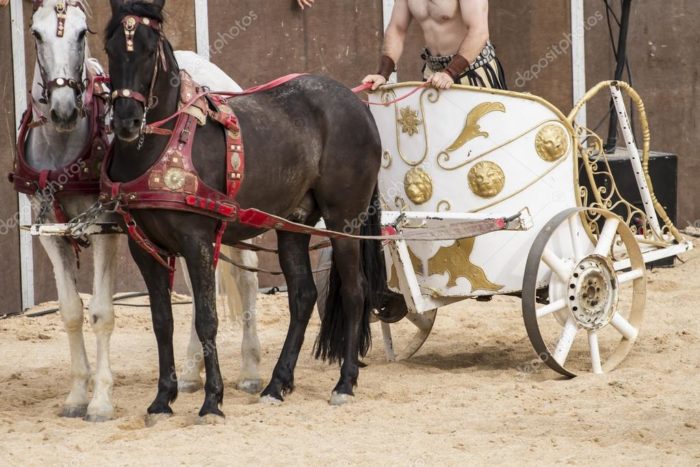
- #Vast outdoor arena in rome where chariot races full#
- #Vast outdoor arena in rome where chariot races free#
This verse also alludes to the great artistry required to steer round the bends. When his seventh meta he has artfully rounded? What Charioteer would with the prize be graced, Propertius tells us something of this in his verses:Īut prius infecto deposcit preamia cursu, On occasion the races could be made shorter.
#Vast outdoor arena in rome where chariot races full#
A referee would preside over the race on horse back although fair play wasn’t the norm.Īncient Roman Circus Maximus – image of a chariot race The full race was called a “missus” and generally included seven laps (called “curricula”) around the end posts called “metae”. The start to a race was sounded by trumpets but the excessive noise eventually lead to a handkerchief called “mappa” being dropped from the magistrate’s or imperial box. I dread to think what it must have been like to be run over by elephants. Nero is also remembered for having introduced camels instead of horses to provide a little variety and the young emperor Heliogabalus tried elephants also. In Nero’s time as many as ten horses might be used and he himself is said to have driven one such “Decemjugis” at the Olympic games. “Trigae”, “Sejuges” and “Septemjuges” (three, six and seven horses) were less usual but not unknown. Types of Chariot at the Races : Quadriga and QuadrigaeĬhariots drawn by two horses were called “bigae” and those drawn by four horsesRoman Chariot – a Biga “quadrigae”. Suetonius tells us that emperor Domitian added two further teams, the gold and purple, but these teams didn’t last longer than his reign. The prasini were the most popular team and there was particular animosity between their supporters and those of the veneti. Roman writers suggest that the colours were inspired by the colours of the four seasons of the year. There were four major teams called “factiones”: the greens (“Prasini”), the reds (“Russata”), the whites (“Alba” or “Albata”) and the sky/sea blues (“Veneti” or “Veneta”).

The charioteers’ tunics were coloured according to their team. The horses would also be handsomely decorated and even their manes combed and possibly threaded with pearls.
#Vast outdoor arena in rome where chariot races free#
A curved knife was fastened over their backs or at their waist so that they could cut themselves free in the event of a crash.

They held the reigns in their left hand and a whip in the right. Even their hair had a particular curly styling. Mosaics show us that this was covered by a sort of corset of leather bands. Their coloured tunics with sleeves were called “vestis quadrigaria”. The charioteers wore leather helmets, knee pads and shin pads.


 0 kommentar(er)
0 kommentar(er)
